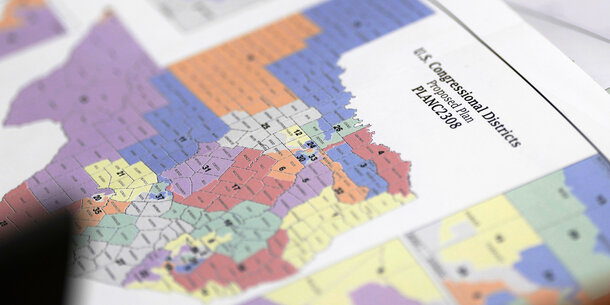On August 12, the Census Bureau released the most detailed results from the 2020 Census so far. The numbers in this redistricting data file will enable states and localities to begin the once-a-decade redrawing of electoral districts. The bureau has said that it will also release the same information in a more user-friendly format by September 30.
The redistricting process is very important because it can influence who gets elected, how various communities are represented, and the ways public resources are distributed.
What did the Census Bureau release on August 12 and how will it be used?
The bureau released the detailed data that states and local governments need to redraw electoral district boundaries. In contrast to earlier census releases, this one provides population and demographic information down to the “census block” level, which is the smallest unit of census geography.
These more detailed numbers have enough granularity to enable map drawers to create districts that satisfy the constitutional requirement that districts be roughly equal in population size. To comply with other legal requirements, like the Voting Rights Act, states will have to consult additional data, including estimates of citizen voting age population released as part of the bureau’s American Community Survey.
The August 12 release of the redistricting data set follows the Census Bureau’s April 26 release of congressional apportionment data, which provided total head counts at the national and state level and was used to determine the number of seats each state will have in the U.S. House of Representatives for the coming decade. However, it didn’t include information about where people lived within a state or details about their age, race, and ethnicity, so it couldn’t be used to draw maps. (The bureau does not release information that identifies specific individuals, in keeping with legal confidentiality protections.)
Why are there two sets of redistricting numbers this year?
The Census Bureau is releasing two sets to enable states to get a head start on the redistricting process. The onset of the Covid-19 pandemic in 2020 just as the census count was getting underway meant that the bureau has needed more time for collecting, processing, and releasing data.
To get results out as soon as possible, the August 12 numbers were released in what the bureau calls a “legacy format” — essentially an older, less user-friendly presentation that may require mapmakers to do some additional work sorting and organizing the data before they can start drawing lines. The same redistricting data will be re-released in a more user-friendly format no later than September 30. Crucially, while the August 12 and September 30 data sets will be packaged differently, they will contain the same numbers.
How long will it take for map drawers to be able to use the data released on August 12?
In most cases, it won’t take more than a couple of weeks. Although not all states will have the necessary resources to use the legacy format data set on their own, a number of them use third-party vendors who can. So, many states are expected to start and potentially even complete their map-drawing processes before the user-friendly September 30 data set is released.
What can these numbers tell us about the accuracy of the 2020 Census?
Some things, but not everything. Assessing the quality of the 2020 Census is a complex inquiry. The redistricting numbers offer some clues, but other particularly significant sources of information about census quality are not yet available.
Because the August 12 files provide granular population and demographic data at the local level, stakeholders will be able to evaluate them to see if the numbers match their sense of the location, size, and characteristics of the communities they know well. They can also compare the data files to other sources, such as recent sample-based surveys or demographic projections. These sources might help identify where undercounts or overcounts could have occurred, but the census numbers will still be the basis for line-drawing decisions. (Mapmakers, for instance, should not substitute the census for sample survey data, like data from the American Community Survey, because those surveys are not actual population counts and do not provide the same level of granularity as the redistricting data set.) The bureau has also committed to producing data quality metrics over the course of the year that stakeholders will likely scrutinize for clues about how well or poorly the count went.
That said, the most important and powerful tool for analyzing the quality of the count will be the bureau’s Post-Enumeration Survey (PES), It’s a survey collected from a sample of households that the bureau is running as an independent check against the 2020 Census results. The fieldwork for the PES is set to be complete by the end of the year, and it should, among other things, help identify undercounts of any specific racial or ethnic groups.
The bureau will not use the PES to adjust the apportionment or redistricting numbers — the survey isn’t designed to support those kinds of uses. But the information it should generate will be important for evaluating whether political representation, funding, and other government services reliant on census data are equitably distributed. The initial results from the PES will be released in the first quarter of 2022, with additional results to be released in the summer of 2022.





